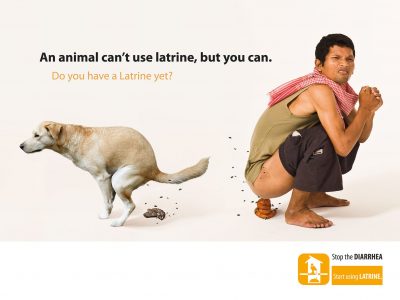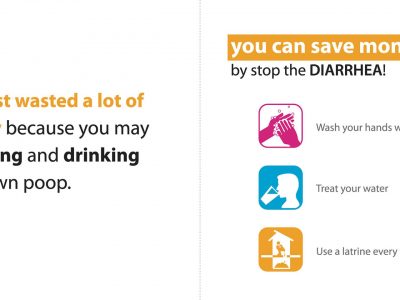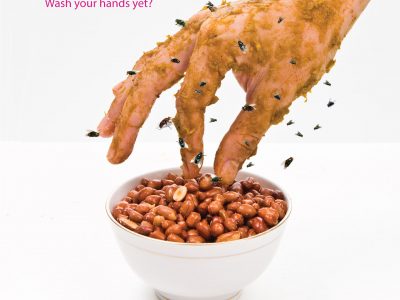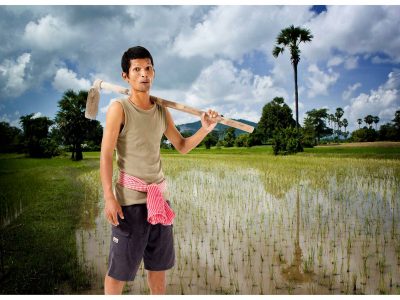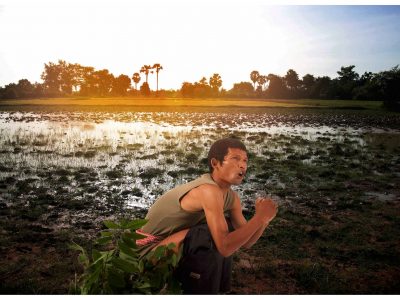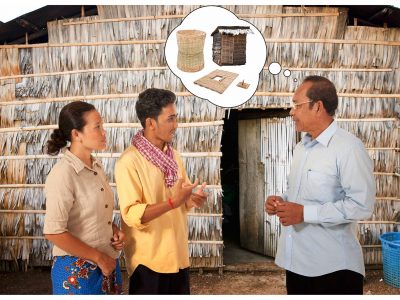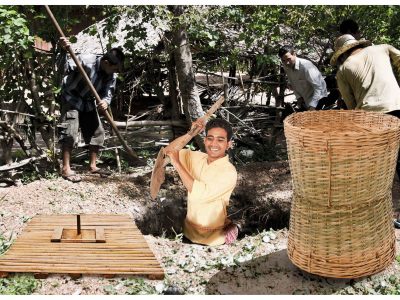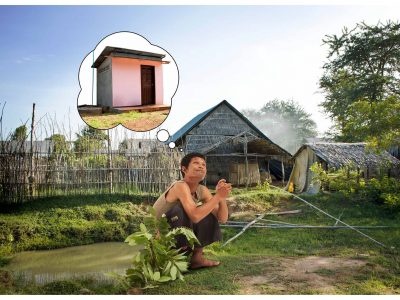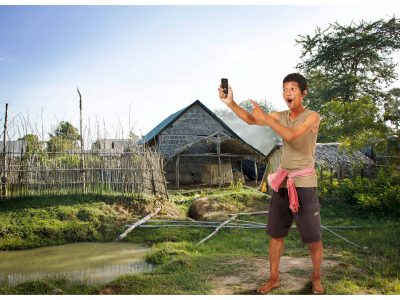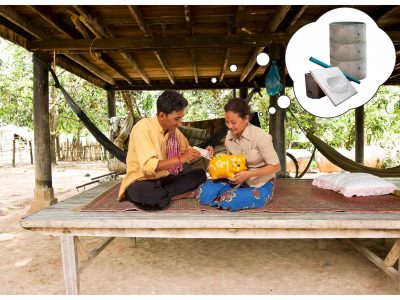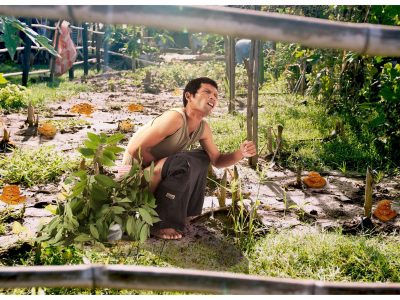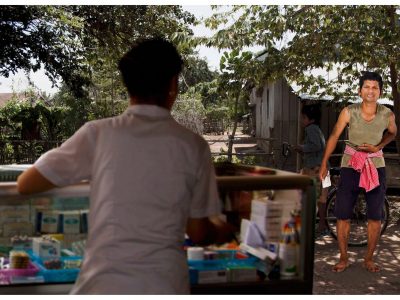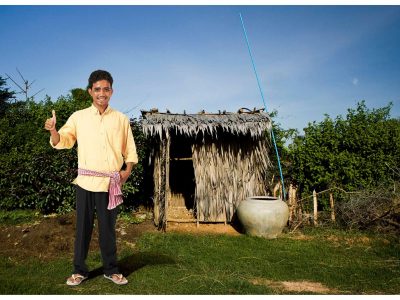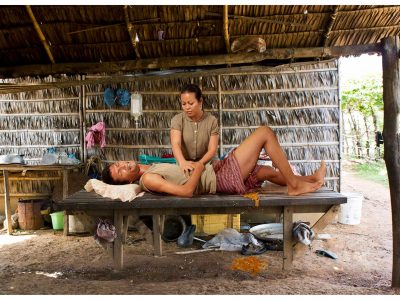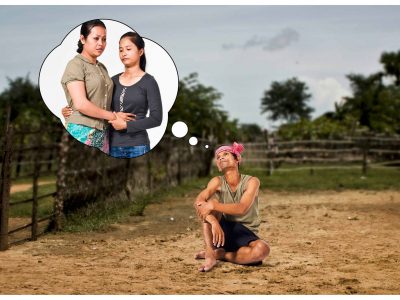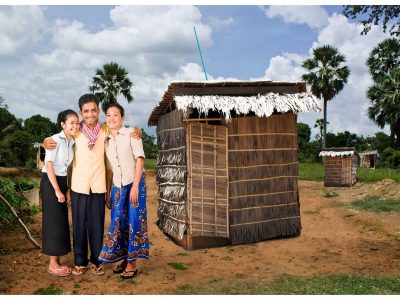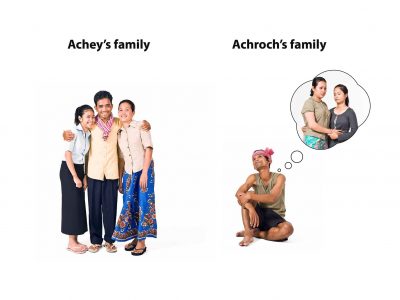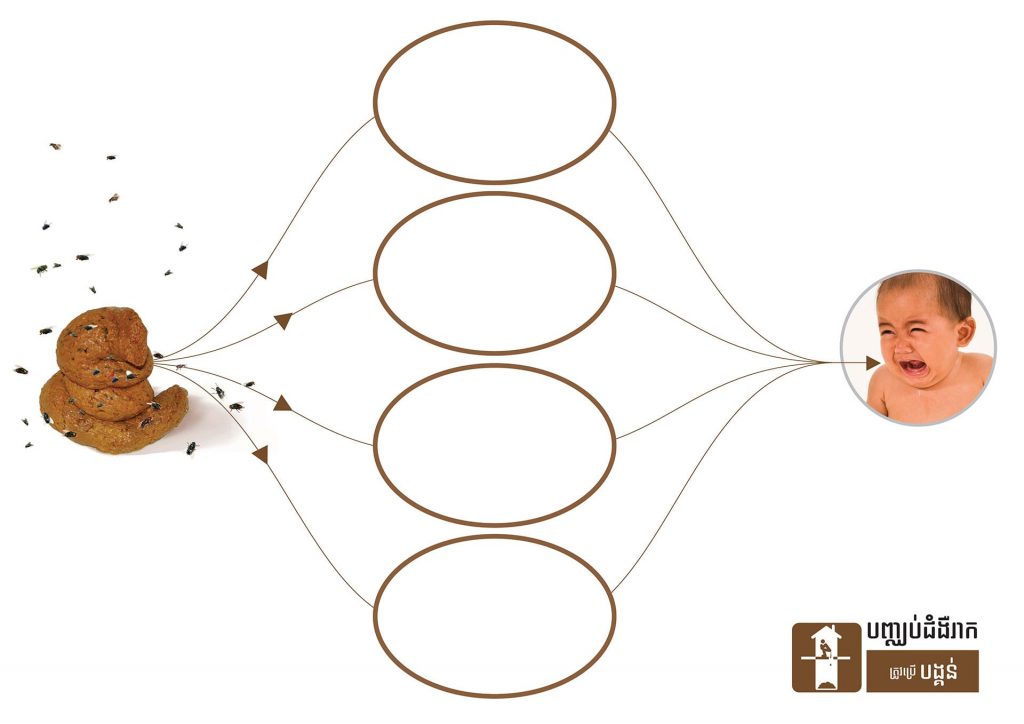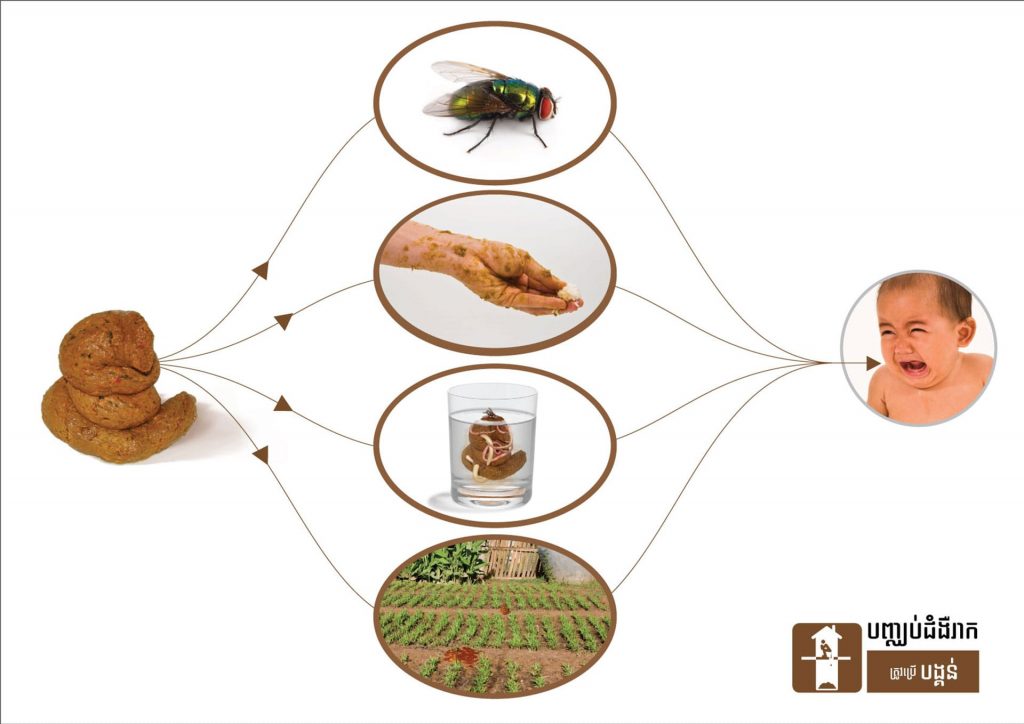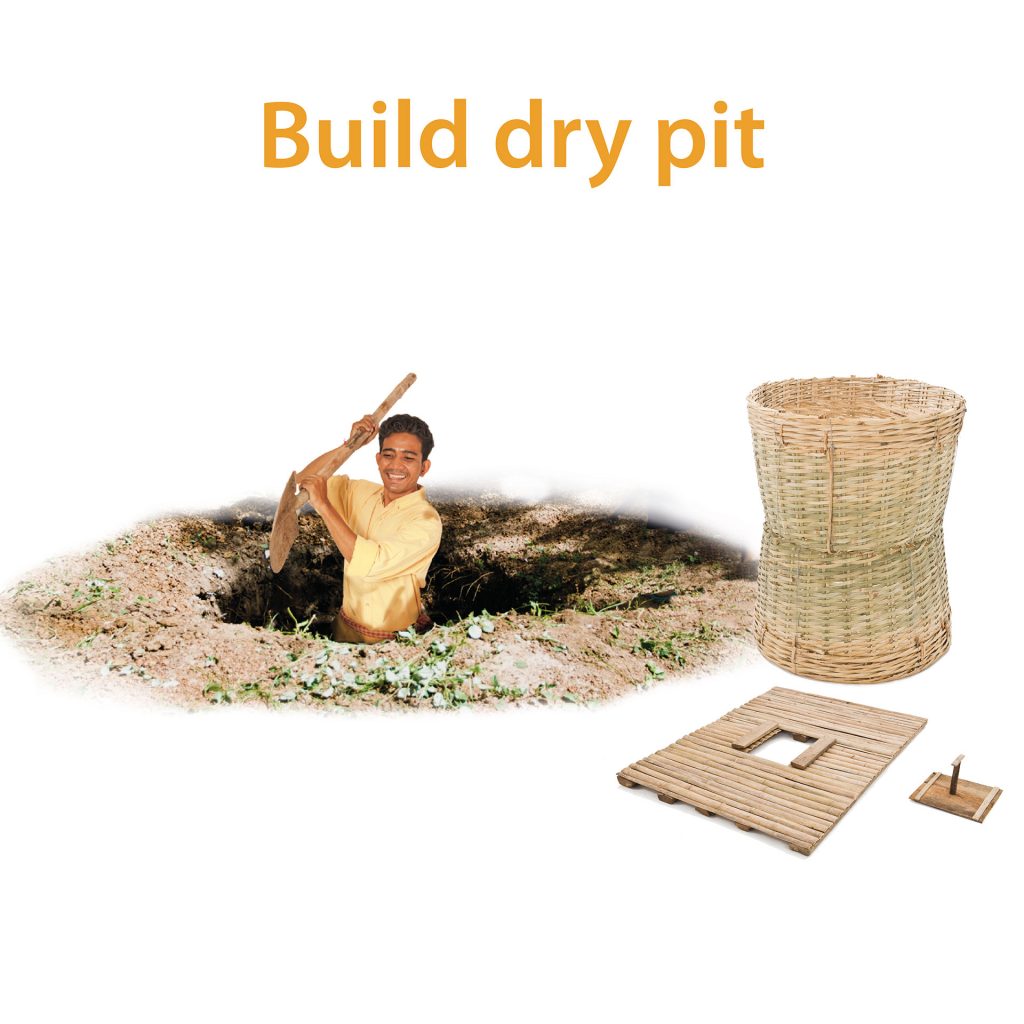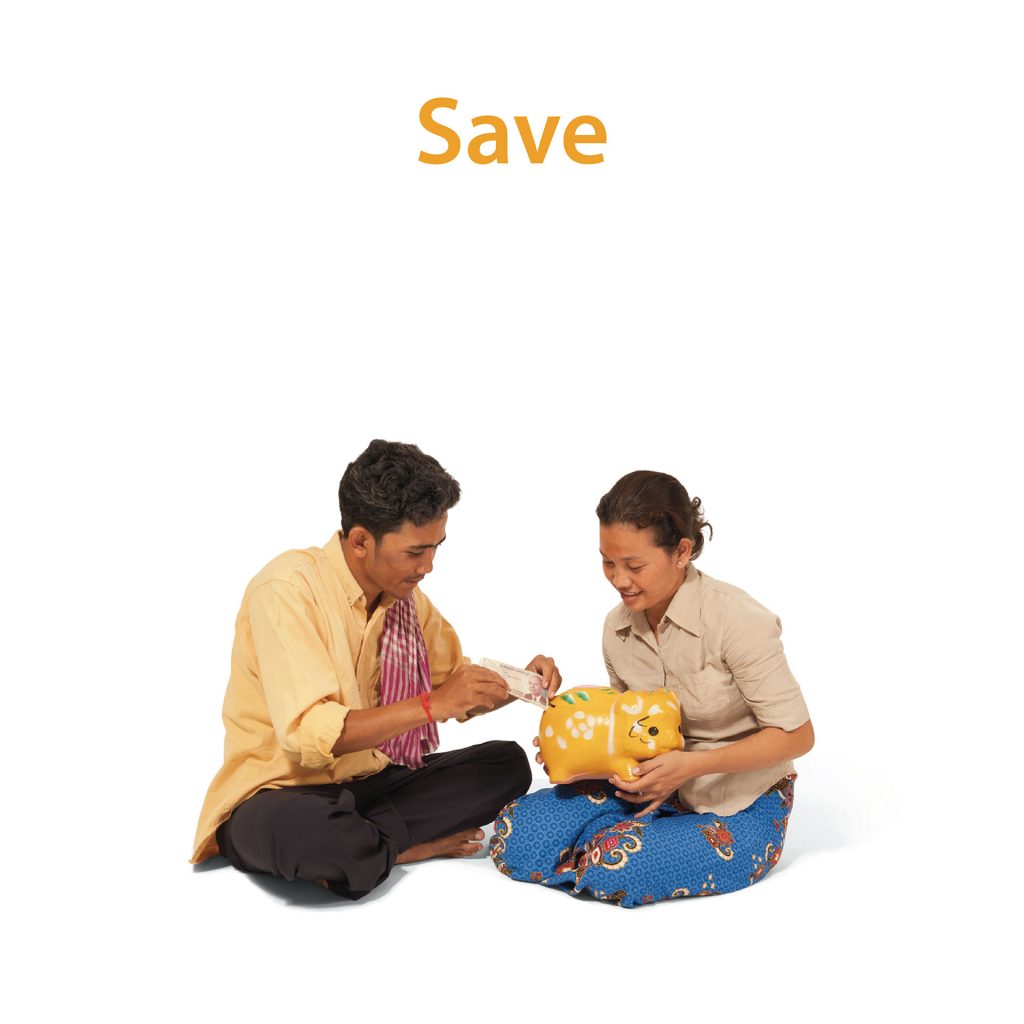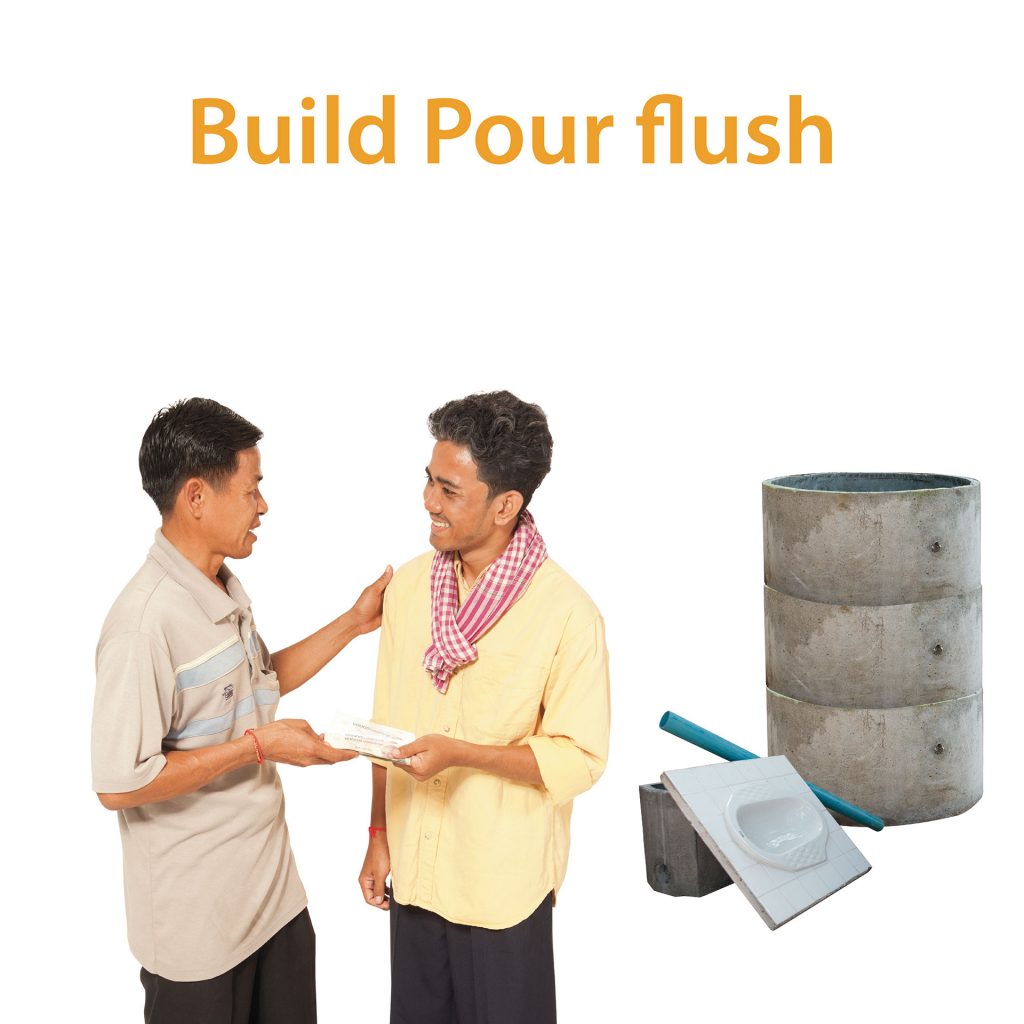Marketing Toolkit (Stop the Diarrhea)
A marketing toolkit that triggers change“Stop the Diarrhea” campaign is an open-source toolkit developed in collaboration with the Cambodian government and the WASH sector. The kit includes the most compelling visuals, stories, and ideas to trigger behaviour change and inspire consumers to invest in their health.
If you would like to have access to the toolkit, please contact us at cambodia@watershedasia.org
POSTERS & LEAFLETS
Shame and disgust are strong behavioral drivers. With this in mind, this posters and leaflets challenge the existing social norm that defecating outside is acceptable. The images are shocking but have proven to spark discussion and self-realization that all people should use a toilet, drink clean water, and wash their hands.
RAW F-DIAGRAMS
In a proposed one-hour training, this F-Diagram is used after the Achey and Achroch flip chart. Participants are asked to brainstorm the different ways feces can reach your mouth. When participants identify a correct answer, they are given a visual aid of the transmission channel and asked to affix it on the poster.
INSPIRATIONAL VIDEO
This short video tells the story of Village Chief, Choern Sok who believed his village would be significantly healthier if everyone had a latrine, so much so that he worked with other village leaders, families, schools, and health centers to make buying toilets a community priority. Three months after he began his movement, 100% of the families in his village had their own latrine.




